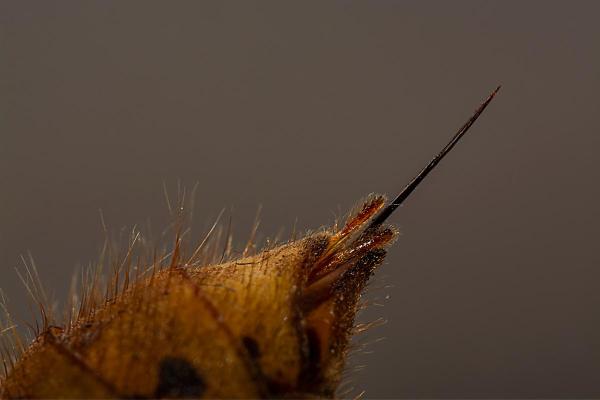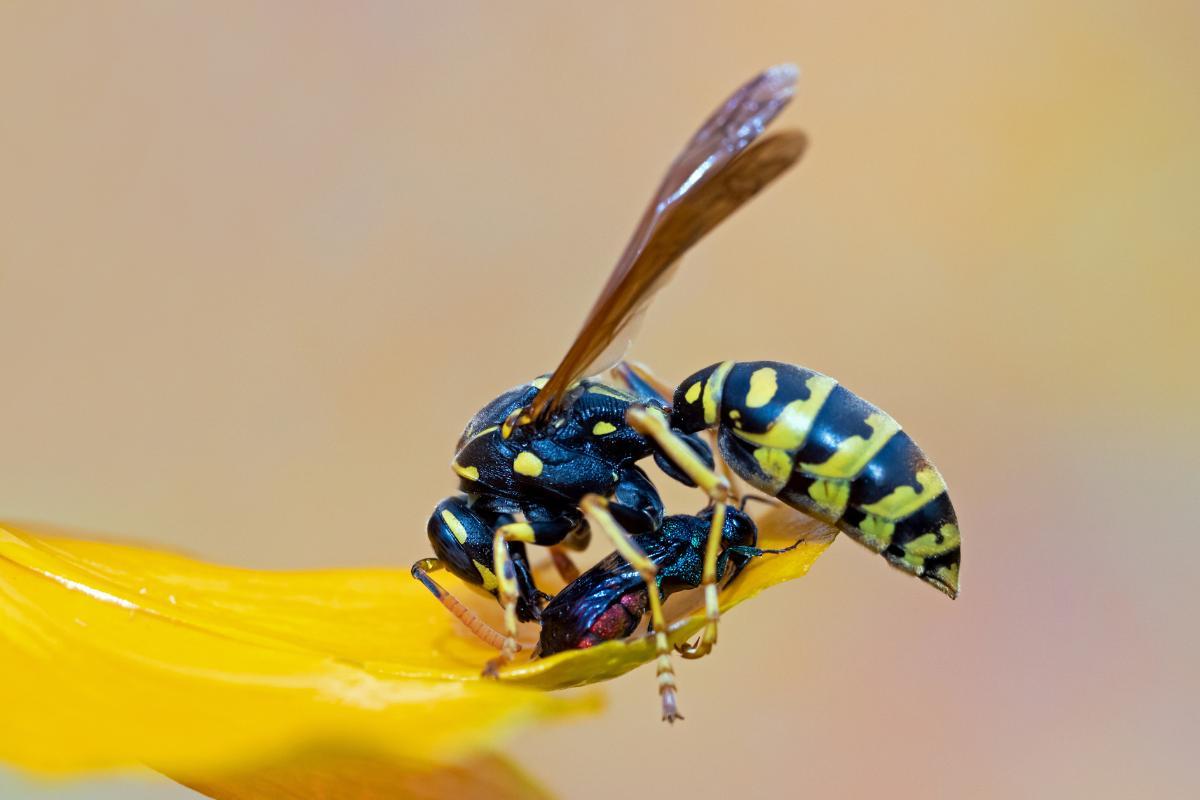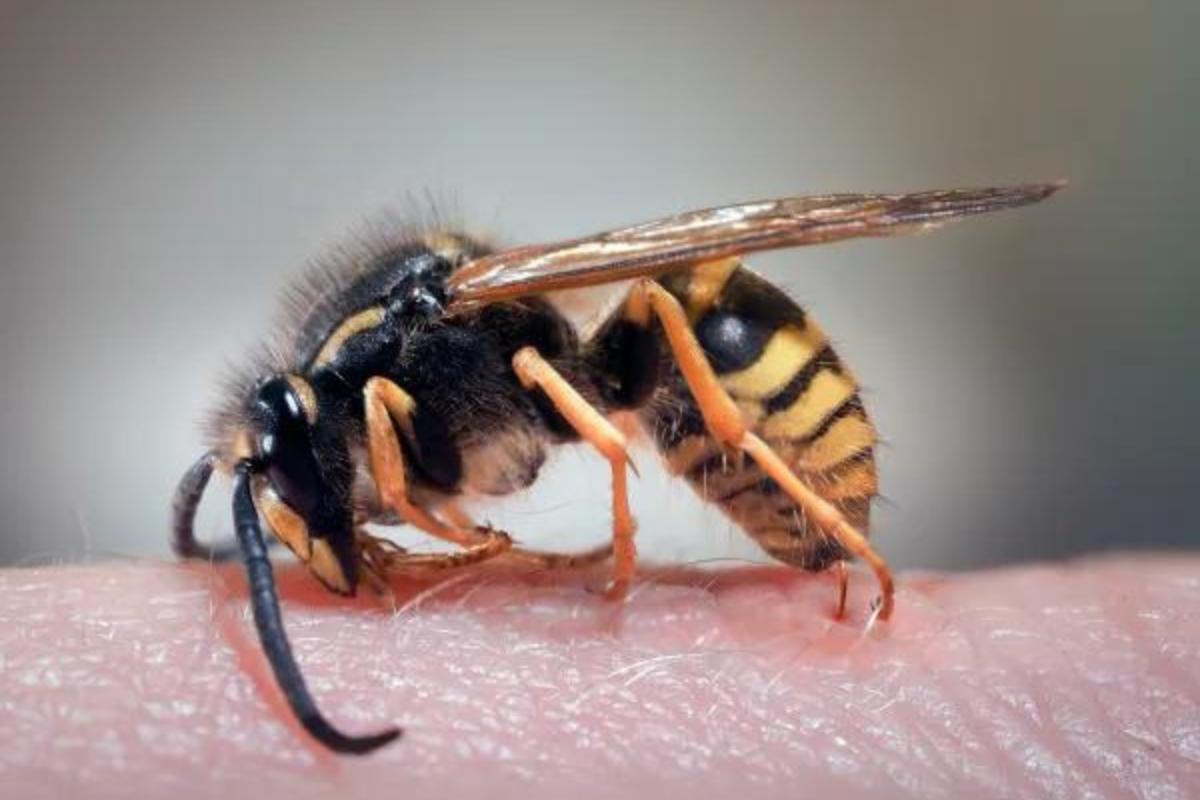Do Wasps Bite or Sting?


Wasps, members of the insect order Hymenoptera, are a diverse and fascinating group of creatures that have captured the attention of scientists and nature enthusiasts alike. With over 100,000 known species, wasps exhibit a remarkable range of behaviors, appearances, and habitats, making them one of the most abundant and ecologically significant insect groups on Earth.
The following AnimalWised article explains whether wasps bite or sting. We will shed light on the distinction between wasp bites and stings, uncovering the reasons behind their defensive and predatory tactics.
Do wasps have a stinger?
Wasps display two primary behavioral categories: social and solitary. Social wasps form colonies characterized by intricate structures and defined roles, while solitary wasps lead independent lives, taking sole responsibility for their survival and offspring. Both social and solitary wasps can possess stingers, which serve various purposes, including defense, prey capture, and subduing potential threats.
The stinger, a remarkable feature primarily found in female wasps, plays a vital role in their survival and reproductive strategies. Located at the tip of their abdomen, this specialized organ serves as a versatile tool with dual functions: self-defense and prey immobilization.
In the case of social wasps, the stinger is a crucial part of their colony's defense mechanism. These wasps reside in complex societies, often consisting of numerous individuals. The female worker wasps, dedicated guardians of the nest, use their stingers to protect the colony from predators and intruders. Swift and coordinated, they inject venom into potential threats, effectively neutralizing any danger to the colony.
For solitary wasps, the stinger serves as an essential tool for securing provisions for their young. Without the support of a colony, these resourceful wasps must find food independently. When they spot their prey, usually other insects, they skillfully employ their stinger to inject venom, paralyzing the victim. Once incapacitated, the solitary wasp transports the prey back to its nest, where it becomes a fresh food source for its developing offspring.
Nevertheless, it's important to recognize that not all wasp species possess stingers. Over the course of evolution, some wasps have evolved away from stingers, adopting alternative means to subdue their hosts. One example is found in certain parasitic wasp species, which have forgone stingers in favor of other specialized adaptations.

Do wasps bite or sting?
Wasps primarily use their stingers rather than biting to defend themselves or capture prey. When a wasp feels threatened or encounters a potential danger, it will use its stinger to inject venom into the perceived threat, serving as a potent defense mechanism. This venom can cause pain, irritation, and, in some cases, allergic reactions in humans.
While stingers are a common and well-known feature among many wasps, some species have evolved differently, developing strong mandibles or jaws that they use for defense or capturing prey. These mandibulate wasps do not rely on a stinger to immobilize their enemies or secure their prey. Instead, they use their formidable biting mouthparts as their primary means of defense and predation.
Do all wasps sting?
As mentioned earlier, some wasps species have lost their stingers through evolution, and their defensive or predatory tactics may involve different mechanisms. From powerful mandibles and parasitic strategies to impressive hunting skills and silk manipulation, these remarkable wasps have adapted ingenious methods to thrive in their respective habitats. However, the vast majority of wasp species rely on their stingers as their primary method of protection and capturing prey.
Why do wasps sting?
Wasps sting primarily as a defense mechanism to protect themselves, their nests, and their colony members. When a wasp perceives a threat or feels cornered, it may resort to stinging as a means of defending itself and warding off potential dangers.
Social wasps, which live in colonies with complex structures and roles, are particularly protective of their nests. When the colony is threatened, the worker wasps, who are all females, will aggressively defend it. They use their stingers to inject venom into intruders, which can cause pain, irritation, and even allergic reactions in humans. Social wasps' collective defensive behavior is well-coordinated, and they can mount a swift and efficient attack against potential threats.
For solitary wasps, which lead independent lives and do not live in colonies, stinging serves as a crucial tool for subduing their prey. These resourceful wasps use their stingers to inject venom into the insects they capture, effectively paralyzing or immobilizing their prey. This ensures that the prey remains fresh and preserved for the wasp's offspring, who will feed on it during their development.
It's essential to recognize that wasps do not sting out of malice or aggression; rather, it is a natural response to perceived threats or when they need to secure food for their young. As with many defense mechanisms in the animal kingdom, stinging has evolved as an effective means for wasps to ensure their survival and the continuity of their species in the intricate web of nature.

Do wasps sting and die?
For most species of wasps, stinging does not lead to their immediate death. Unlike honeybees, which have barbed stingers that get lodged in the victim, causing the bee's abdomen to tear away upon stinging, wasps have smooth stingers that allow them to sting repeatedly without injury.
When a wasp stings, it injects venom into its target, which serves as a defense mechanism or a means to capture prey. After stinging, the wasp can withdraw its stinger and fly away. This ability to sting multiple times is a significant advantage for wasps, as it allows them to defend their nests or immobilize their prey effectively.
While most wasps do not die after stinging, there are some exceptions. Certain species of wasps, particularly those with limited venom supply, may experience more significant energy loss after stinging, which could eventually lead to their death. Nevertheless, such cases are relatively rare compared to honeybees, where stinging is often fatal to the bee.
You might find this other article interesting, as it explains the differences between wasps and bees.
What to do if a wasp stings you?
Dealing with a wasp sting promptly and correctly can help alleviate discomfort and prevent potential complications, especially for individuals who might be allergic to the venom.
If a wasp stings you, follow these steps:
- Check for the stinger: although wasps do not typically leave their stingers behind like honeybees, it's still a good idea to check the affected area to ensure the stinger is not present. If you see a stinger, carefully remove it using a pair of tweezers or scrape it off with a fingernail. Be gentle to avoid squeezing the venom sac and releasing more venom into the wound.
- Clean the area: wash the sting site with soap and water to reduce the risk of infection. Gently pat the area dry with a clean towel.
- Apply cream with analgesic or anti-Inflammatory: after cleaning the area, you can apply over-the-counter creams or ointments containing analgesics or anti-inflammatories. These can help alleviate pain and reduce swelling at the sting site.
- Use cold compresses: applying cold water compresses or ice wrapped in a cloth to the sting area can provide relief from pain and help reduce swelling.
- Monitor for allergic reactions: If you know you are allergic to wasp stings or are unsure of your allergy status, it's crucial to pay close attention to any symptoms that may arise after the sting. Symptoms of an allergic reaction can include difficulty breathing, hives, severe swelling, dizziness, and nausea. If you experience any of these symptoms or have a history of severe allergic reactions to insect stings, seek immediate medical attention. Anaphylaxis, a severe and potentially life-threatening allergic reaction, requires prompt medical intervention.
Remember, it's always best to exercise caution around wasps and avoid disturbing their nests or swatting at them, as this may increase the likelihood of being stung. If you find yourself in an area with a high concentration of wasps, maintain a safe distance and stay calm to minimize the chances of provoking them.
If your dog gets stung by a wasp, you may find it helpful to read our other article where we explain how to handle the situation.
If you want to read similar articles to Do Wasps Bite or Sting?, we recommend you visit our Facts about the animal kingdom category.
- Britannica, T. Editors of Encyclopaedia. Wasp . Encyclopedia Britannica. Available at: https://www.britannica.com/animal/wasp
- Fernández, S. and Pujade-Villar, J. (2015). Order Hymenoptera . Available at: http://sea-entomologia.org/IDE@/revista_59.pdf
- Yoder, H. (2001). Vespula maculifrons . Animal Diversity Web. Available at: https://animaldiversity.org/accounts/Vespula_maculifrons/







